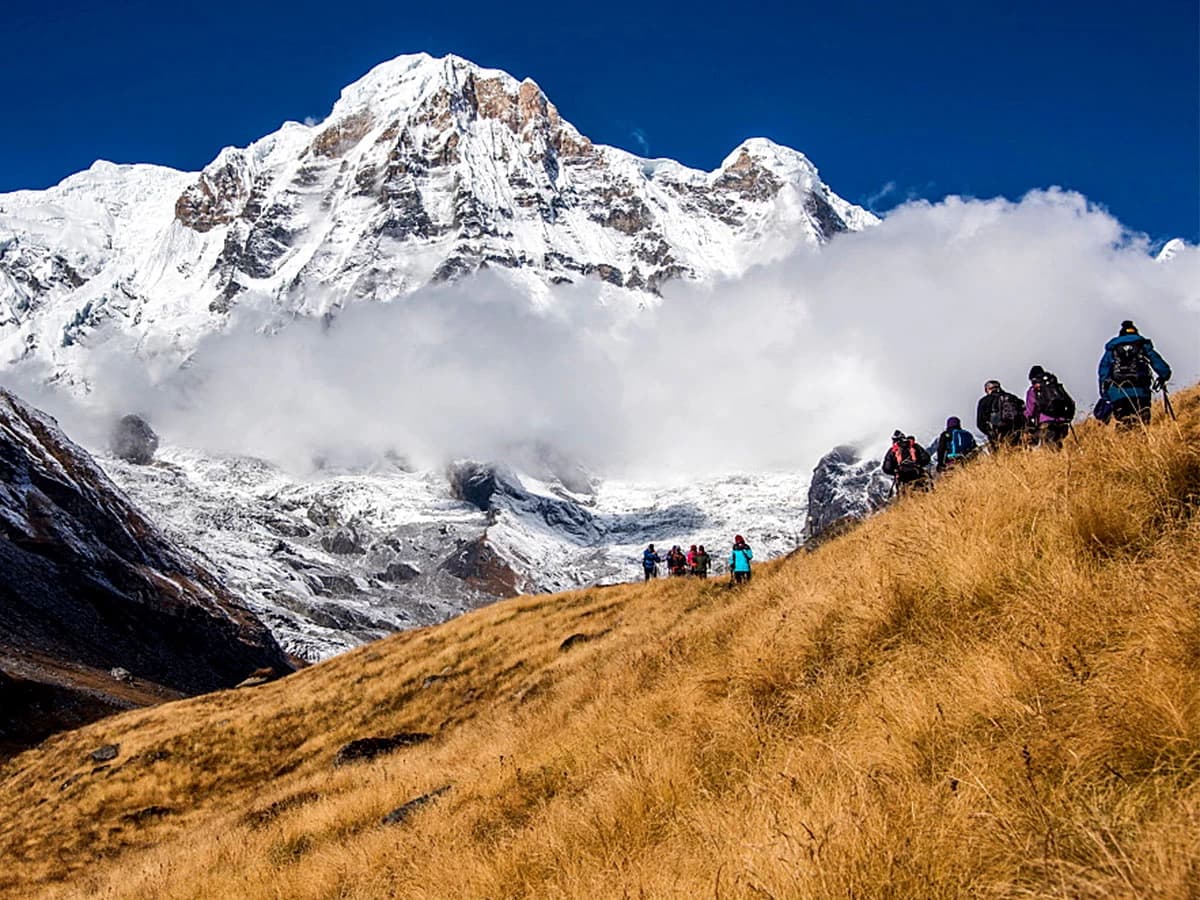The Annapurna I Expedition is a thrilling adventure that leads climbers to the summit of Annapurna I (8,091 meters), the tenth-highest peak in the world. Renowned for its stunning beauty and challenging conditions, Annapurna I is often considered one of the most challenging and technically demanding 8,000-meter peaks to ascend.
The journey begins with a trek from Besisahar to Base Camp, which is located at an altitude of approximately 4,130 meters. The trek takes climbers through picturesque landscapes, including terraced fields, lush forests, and traditional villages.
Trekkers will experience the vibrant culture of the Gurung and Magar communities as they pass through charming settlements like Ghandruk and Chomrong, offering a glimpse into local life and traditions.
As trekkers ascend, they will encounter diverse landscapes that showcase the stunning natural beauty of the Annapurna region. The trek begins in subtropical areas, transitioning into alpine meadows and finally into the stark, dramatic terrain near Base Camp.
The changing flora and fauna, including rhododendron forests and various wildlife, enhance the trekking experience.
The expedition culminates at Annapurna Base Camp, which serves as the starting point for the summit attempt. The base camp is situated in a breathtaking bowl-shaped amphitheater surrounded by towering peaks, including Annapurna I, Annapurna South, and Machapuchare. The views from Base Camp are awe-inspiring, making it a memorable location for acclimatization and preparation.
The ascent of Annapurna I presents significant technical challenges. Climbers typically follow the North Face route, which involves steep ice and rock climbing. Key difficulties include navigating the icefall, crevasses, and technical rock sections. The unpredictable weather conditions in the Annapurna region further add to the challenge, requiring climbers to be adaptable and prepared for sudden changes.
To facilitate the summit attempt, climbers establish several high camps, including Camp I (5,700 meters), Camp II (6,400 meters), and Camp III (7,200 meters). Each camp is essential for acclimatization, rest, and preparation for the final push to the summit. The higher the camps, the more demanding the conditions, testing climbers' endurance and resilience.
The summit attempt typically begins in the early hours of the morning, allowing climbers to take advantage of stable weather conditions. The final ascent to the summit involves navigating challenging terrain, including steep snow slopes and exposed ridges. Reaching the summit of Annapurna I is a monumental achievement, offering climbers breathtaking panoramic views of the surrounding peaks and valleys.
After summiting, climbers face the demanding descent, which requires careful navigation through technical sections. The return journey to Base Camp allows for reflection on the incredible experience and the camaraderie built during the expedition. Climbers often celebrate their achievements together, sharing stories and memories
The Annapurna I Expedition is a challenging yet rewarding adventure that combines technical climbing with breathtaking natural beauty. The journey to one of the world’s highest peaks offers climbers a unique experience filled with rich cultural encounters and stunning landscapes.
With its formidable challenges and stunning vistas, the Annapurna I Expedition is a remarkable undertaking for seasoned mountaineers seeking to conquer one of the most iconic peaks in the Himalayas.
Highlights
- stunning views of terraced fields, lush forests, and traditional Gurung and Magar villages.
- variety of landscapes, from subtropical forests to alpine meadows, showcasing the region's rich flora and fauna.
- Breathtaking views of Annapurna I, Annapurna South, and Machapuchare, provide a stunning backdrop for acclimatization.
- Reaching the summit of Annapurna I, a significant achievement in mountaineering.
- Offers an opportunity for climbers to reflect on their incredible journey and celebrate their accomplishments together.



